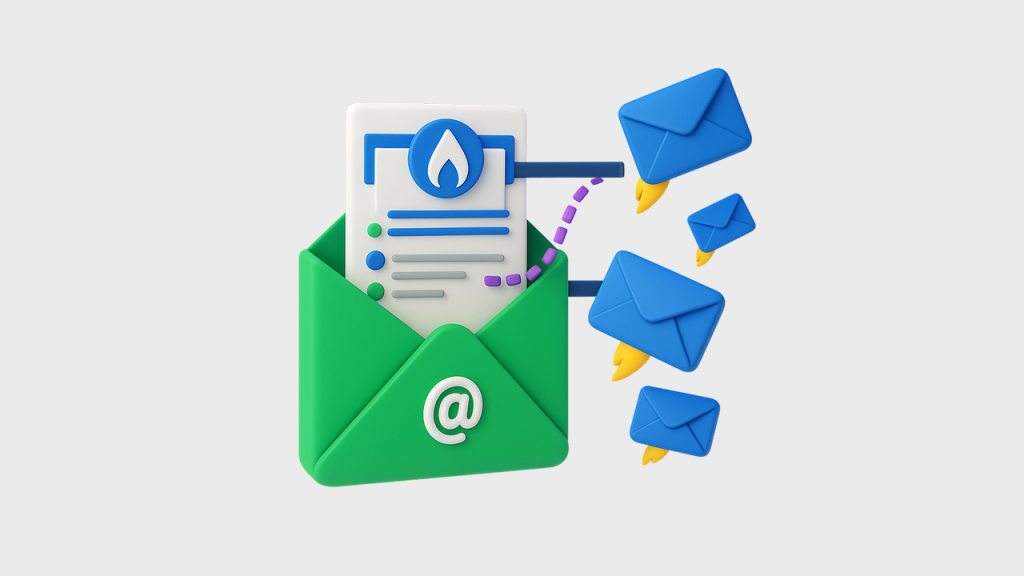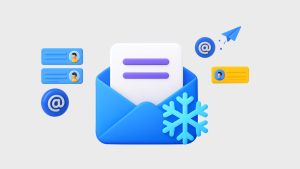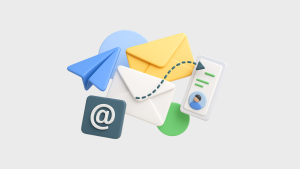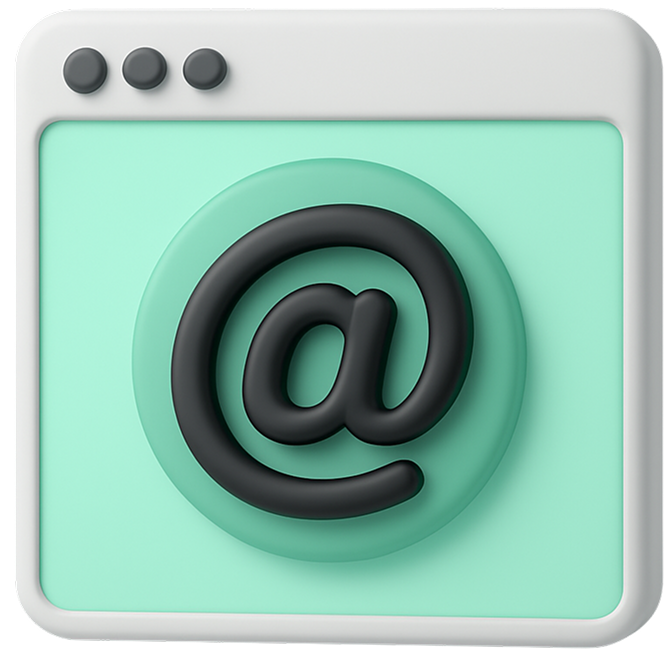- What Is Email Warm-Up?
- Why Email Warm-Up Is Non-Negotiable
- When Should You Warm Up an Email?
- How Long Should Email Warm-Up Take?
- How Email Warm-Up Works: Step-by-Step
- What Happens If You Skip Email Warm-Up?
- Myths About Email Warm-Up (Debunked)
- Final Thoughts
- Why Gamalogic Matters
- TL;DR: Why Email Warm-Up Is a Must
Email marketing is one of the highest-ROI channels in digital marketing, but sending emails without a strategy can backfire—especially when you’re using a new domain, IP address, or email tool. One of the most overlooked (but critical) steps in email marketing success is email warm-up.

Think of email warm-up like stretching before a workout. Skip it, and you risk poor performance—or worse, long-term damage. In the case of email, that damage can come in the form of low deliverability, spam folder placement, and damaged sender reputation.
In this article, we’ll break down what email warm-up is, why it matters, how it works, and how to do it right—so you can hit send with confidence.
What Is Email Warm-Up?
Email warm-up is the process of gradually increasing your email sending volume and engagement to build a positive sender reputation with Internet Service Providers (ISPs) like Gmail, Outlook, and Yahoo.
When you start sending emails from a new domain or IP address, email providers don’t yet trust you. To avoid spam and phishing, they scrutinize every sender—and warming up helps you prove you’re a legitimate, trustworthy communicator.
Think of it like building a credit score: consistent, positive behavior over time helps you gain credibility and deliverability.
Why Email Warm-Up Is Non-Negotiable
1. It Builds Trust With ISPs
Email providers use complex algorithms to decide whether your message lands in the inbox, spam, or gets blocked entirely. These systems evaluate:
- Sending volume
- Bounce rate
- Spam complaints
- Engagement metrics (opens, clicks, replies)
- Consistency in sending behavior
A proper warm-up process ensures you appear reliable and consistent, so ISPs begin to trust you—and deliver your emails accordingly.
2. It Protects Your Sender Reputation
Your sender reputation is like your online credibility score. If you send too many emails too quickly—especially from a new address—you risk:
- Getting flagged as spam
- Triggering rate limits or throttling
- Damaging your domain’s trust score
Once damaged, sender reputation is hard to repair. Warming up helps you build a strong reputation from the start.
3. It Maximizes Email Deliverability
Deliverability is the ability of your emails to reach the inbox, not just “send.” Without warming up, your emails may technically go out—but end up buried in spam folders or lost entirely.
Warming up allows you to:
- Avoid spam filters
- Reduce bounce rates
- Improve open and click-through rates
- Ensure messages reach real people at the right time
4. It’s Critical for Cold Emailing and Outreach
If you’re running cold outreach campaigns for sales or partnerships, email warm-up becomes even more important. Cold email has a higher risk of being flagged, so showing positive sending behavior beforehand is essential to avoid blacklisting or domain bans.
5. It Helps with New Domains or Email Tools
Launching a new brand, migrating to a new domain, or switching email service providers (ESPs) can all trigger ISP scrutiny. A warm-up campaign ensures a smooth transition, especially when moving bulk contacts or restarting dormant lists.
When Should You Warm Up an Email?
You should run a warm-up strategy if:
- You’re using a new email domain
- You’re sending from a new IP address
- You’re switching to a new email marketing platform
- You’re launching cold email campaigns
- You haven’t sent emails from your account in a while (60+ days)
- You’re scaling your sending volume significantly
How Long Should Email Warm-Up Take?
The warm-up period typically lasts 2 to 4 weeks, depending on:
- Volume goals
- Domain history
- Type of audience (cold vs. opt-in)
- Engagement metrics
For newer domains, the process should be slower. For existing domains with prior engagement, the timeline can be slightly compressed—but should never be skipped.
How Email Warm-Up Works: Step-by-Step
Step 1: Start With a High-Quality Email Address
Use a branded, domain-based email (e.g., hello@yourcompany.com) rather than free providers (like Gmail or Yahoo). Ensure:
- SPF, DKIM, and DMARC records are properly set up
- Your domain is verified by your email platform
- Your sending domain is at least 1–2 weeks old
Step 2: Begin With Low Volume and Gradual Increases
Start small. On Day 1, send 10–20 emails. Increase volume daily by 10–30%, depending on engagement.
Sample warm-up schedule (week 1):
- Day 1: 15 emails
- Day 2: 25 emails
- Day 3: 40 emails
- Day 4: 60 emails
- Day 5: 80 emails
- Day 6: 100 emails
- Day 7: 125 emails
Pro Tip: Pause or slow down if open/click rates drop or bounce rates rise.
Step 3: Send to Highly Engaged Recipients First
Start by emailing people most likely to open, click, or reply—such as:
- Internal team members
- Past buyers or loyal customers
- Subscribers who recently opted in
These positive interactions signal to ISPs that your messages are wanted and trusted.
Step 4: Focus on Deliverability-Friendly Content
Avoid heavy sales language, spammy words (“FREE!!!”, “Act now”, etc.), or excessive links. During warm-up:
- Keep subject lines clear and neutral
- Personalize the message
- Use clean HTML or plain text
- Include unsubscribe options and contact info
Step 5: Monitor Key Metrics
Track your progress daily. Key warm-up KPIs include:
- Open rates (aim for 40%+ early on)
- Click-through rates
- Spam complaints (keep under 0.1%)
- Bounce rates (keep under 2%)
Tools can automate this process and simulate engagement to accelerate warming up.
What Happens If You Skip Email Warm-Up?
Skipping warm-up might seem like a shortcut—but it often leads to:
- Spam folder placement
- IP/domain blacklisting
- Low open/click rates
- High unsubscribe or complaint rates
- Decreased ROI from campaigns
It’s like walking into a new neighborhood and shouting through a megaphone. People won’t listen—they’ll report you. Instead, warming up helps you introduce yourself politely, build trust, and get invited in.
Myths About Email Warm-Up (Debunked)
❌ “I’m using a verified ESP, so I don’t need to warm up.”
Even with tools like Mailchimp or HubSpot, your domain still needs to build a reputation. ESPs help—but don’t replace warm-up.
❌ “I only send a few emails per day, so I’m safe.”
Low volume doesn’t always equal low risk. Engagement quality matters just as much.
❌ “Warming up is only for cold email.”
Nope! Even newsletters and transactional messages benefit from a warm-up—especially on new or dormant accounts.
Final Thoughts
Email warm-up isn’t just a passing trend—it’s a critical step for ensuring successful email outreach in 2025 and beyond. Whether you’re launching a cold campaign, switching ESPs, or using a new domain, proper warm-up lays the groundwork for strong deliverability and long-term performance.
Why Gamalogic Matters
To get the most out of your warm-up efforts, it’s essential to start with a clean, high-quality email list. That’s where Gamalogic comes in. As a powerful email verifier and finder tool, Gamalogic helps identify valid, deliverable email addresses while filtering out risky, fake, or inactive ones. It ensures you’re only sending to addresses that matter—protecting your sender reputation, improving open rates, and supporting a smoother warm-up process. With Gamalogic, your campaigns are built on a solid, trustworthy foundation from the very first send.
TL;DR: Why Email Warm-Up Is a Must
- Protects your domain and sender reputation
- Increases inbox placement and open rates
- Builds long-term trust with ISPs
- Prevents spam flags and blacklists
- Sets your campaigns up for success from day one
- Works best when paired with a tool like Gamalogic
Before you hit send, warm up your email, and make sure your list is clean with Gamalogic. Your reputation, and your ROI, depend on it.
You might also like

Is It Right to Run Cold Outreach During the Holidays? A Data-Backed B2B Perspective
As the holidays are around, B2B sales and marketing teams face a familiar question: should cold outreach continue, or is it better to pause until business returns to normal? Inbox activity slows, decision makers go on leave, and response rates often drop. But assumptions are not strategy. This article cuts through opinion to examine real B2B outreach data, seasonal engagement trends, and deliverability risks to help you decide if holiday cold outreach is worth running and how to do it right.

7 Email Drip Campaigns Every Business Should Be Running (But Probably Isn’t)
Email drip campaigns do more than automate messages—they build relationships, drive conversions, and keep your audience engaged. In this guide, we’ll break down seven essential drip campaigns every business should be running to nurture leads, onboard customers, and boost long-term growth.

How to Let AI Help With Emails (Without Losing Your Personality)
AI is great for structure, grammar, and speeding up drafts but it can’t replace your unique voice. Think of it as an assistant that helps polish and streamline your writing, while you provide the personal touch that makes emails authentic and impactful; explore the blog to know more about striking this balance.






 No credit card required
No credit card required


Post your Comment.